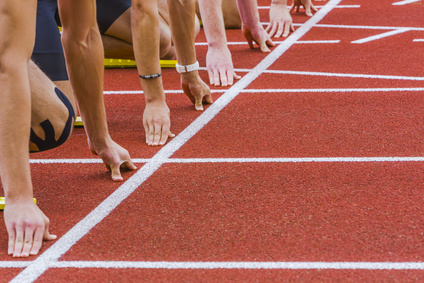 Even the experts get injured sometimes, and the run up to the Olympic games is a stressful time for professional athletes. When an injury could be the end of your career, it’s even more vital to take good care of your feet. Here at Foot Solutions, we see all manner of foot problems and, while the Olympians are warming up, we think that the rest of us could benefit from some tips.
Even the experts get injured sometimes, and the run up to the Olympic games is a stressful time for professional athletes. When an injury could be the end of your career, it’s even more vital to take good care of your feet. Here at Foot Solutions, we see all manner of foot problems and, while the Olympians are warming up, we think that the rest of us could benefit from some tips.
Sporting Foot Injuries and How to Treat Them:
- Strains and sprains. Your feet are under extra strain when you exercise, and strains and sprains are common amongst runners, in particular. Rest is a crucial element in recovering, and wearing a support to protect the damaged area can be helpful. Warming up is an essential practice if you want to avoid seriously damaging your muscles and joints.
- Plantar fasciitis. Plantar fasciitis is a condition that occurs when the long plantar fascia that connects the back of the foot with the toes becomes damaged or torn. It is usually characterized by heel pain, which is sharp and often debilitating. It is usually treated by cold applications, rest, and specific exercises to heal the problem area.
- Stress fractures. Tiny, hairline breaks in the bones of the foot are often the result of over-training, or of bad habits during practices. These tiny breaks can become problematic if they are not treated, since they can lead to a complete break. You should seek medical attention as soon as possible if you are concerned about fractures or unexplained pain in your feet
- Lisfranc injuries. A Lisfranc injury affects the middle of the foot, where the bones of the toes connect to the bones of the arch. The Lisfranc ligament is a strong strip of tissue that joins these bones, and it plays a vital role in strengthening the joint and maintaining alignment. Damage to this ligament can be very painful and this condition usually requires surgery to stabilize the joints.
- Morton’s Neuroma. Mortons Neuroma is characterized by the feeling of a small stone in the underside of the foot, or by localized numbness or tingling. The best way to treat this condition is to wear shoes that do not constrict the foot in any way, but offer a good amount of support and protection. Ice can also be helpful in recovery.
Sports Shoes Can Help Prevent Foot Pain and Problems
The best way to keep your feet feeling great is to wear shoes that fit your feet well and offer a good amount of support and cushioning. Different styles suit different people, so a gait analysis test can be very helpful in working out what sort of shoes will benefit your feet the most.
For the latest ranges of shoes for work, training or leisure, pop in and see our friendly staff at Foot Solutions. We hope you’ll be inspired to achieve new fitness dreams by the preparations for the Olympics this year!
































